Review: Samsung Galaxy S7 Edge for Verizon Wireless
Mar 17, 2016, 3:30 PM by Eric M. Zeman
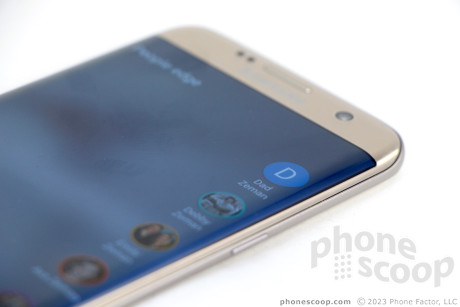
Samsung's top-of-the-line smartphone for 2016 is the Galaxy S7 Edge. This curvy beauty is a powerful addition to Samsung's roster of Android smartphones. It impresses with its high-quality design, materials, and build. The rounded glass edges and larger battery give the S7 Edge an (ahem) edge over the smaller S7. Here is Phonescoop's in-depth review.
Editor's Note: Because the S7 Edge is so similar to the S7, some portions of this review have been carried over from our in-depth look at the S7. We fully tested the S7 Edge.
Is It Your Type?
The Galaxy S7 Edge may be Samsung's ultimate Goldilocks phone. It's bigger and more interesting than the standard S7, but smaller and easier to use than last year's S6 Edge+ and Note 5. Like the S7, the S7 Edge represents Samsung at its absolute best in terms of hardware design, engineering, and manufacturing. The Galaxy S7 Edge delivers refined and balanced performance in nearly every respect, but this smartphone will really set you back some Benjamins. In other words, the S7 Edge is for people who want the best and are willing to pay for it.
Body
The Galaxy S7 Edge and its brother, the S7, are works of art disguised as pieces of technology. They show off Samsung's best thinking and execution. The S7 Edge and S7 are not perfect, but they're getting close.
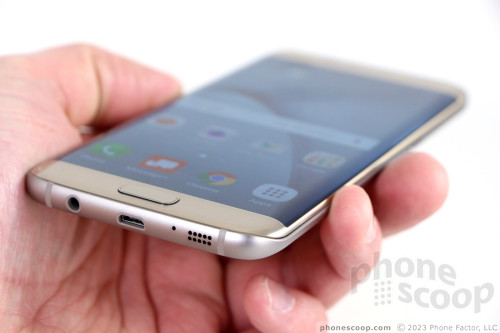
Samsung's flagship phones made a big jump between 2014 and 2015 when the company ditched plastic in favor of metal and glass. The improvement in quality was enormous. Samsung largely recycled the basic design of the S6 Edge/Edge+ for the S7 Edge, but smoothed out most of the rough spots. For example, the rear glass panel is now curved at the edge to meet the frame of the phone, giving the S7 Edge a more rounded look and feel.
My favorite improvement? The frame along the side edges doesn't cut into your palm as it did with the S6 Edge+. This is in part because the joints between the glass and aluminum are more seamless all the way around. It also helps that the S7 Edge is narrower than the S6 Edge+. The metal frame is thick along the bottom and top edges (like the S7), but noticeably thinner as it runs up the sides, where the screen bends around. In fact, the side frame of the S7 Edge is probably 40% thinner than the frame of the S7.
In terms of size, the S7 Edge falls in right between last year's S6 Edge and S6 Edge+, and that's a good thing. The S7 Edge is larger than the S7, too, thanks to the difference in screen size (5.5 inches v. 5.1 inches). Most people will view the iPhone 6s Plus as the chief competitor to the S7 Edge. The S7 Edge is far smaller than the iPhone 6s Plus, even though the screens are the same size. There's no doubt in my mind the S7 Edge wins for hardware usability when pitted against the 6s Plus. It's not as compact as the standard S7, but I still found the S7 Edge very comfortable to use one-handed.
Samsung used top-notch materials to assemble the S7 Edge. The aluminum frame is strong, and the glass panels are fitted into the frame precisely. You simply can't ask for a more refined and thoughtfully crafted handset. Samsung was sure to assemble the S7 Edge as tightly as possible. It's a dense piece of hardware, and you can tell by its heft. The phone slips into pockets with ease, and is just as easy to retrieve. It is mostly glass, though, so if you drop the S7 Edge onto a hard surface, well, good luck with that. Some may feel compelled to protect the S7 Edge with a case, which of course makes it bigger and detracts from its aesthetic appeal.
The phone's front face is classic Samsung and in lockstep with the company's recent designs. The metal frame has a matte finish that I prefer to chrome. The glass on our review unit is rose gold, but the phone also comes in black, silver, and white. A color-matched grille covers the earpiece speaker. Several sensors and the user facing camera are plainly visible. An oval-shaped home button (that doubles as the fingerprint sensor) rests below the display. It has a raised profile to make it easier to find and use. Unlike previous designs, the button's rim is not chrome and instead blends in with the rose gold glass. Travel and feedback are excellent. Two capacitive controls sit on either side of the home button, with multitasking on the left and back on the right. The capacitive buttons work fine, though the placement is counter-intuitive (the back button would make more sense on the left.) The 5.5-inch display fills the bulk of the phone's face. The bezel between the curved edges of the display and metal frame have been reduced from maybe 3mm on the S6 Edge to perhaps 1mm on the S7 Edge. The effect is noticeable in improving the display-to-bezel ratio.
Samsung placed the volume buttons on the left side of the phone. They are positioned close to the top edge. Samsung nailed the profiles, action, and feedback of these keys. I really like these buttons. The screen lock button is positioned closer to the middle of the right edge. It's well-placed, easy to find, and pleasing to use. You'll find no chintzy components here.
The combo SIM/memory card tray is buried in the S7 Edge's top edge. Samsung is offering only a 32 GB variant of the S7 Edge to US consumers, but the memory card slot supports microSD cards up to 200 GB. The tray is a little janky. It's plastic, not metal, and it takes some coordination to properly insert it with a SIM card and memory card. (Bringing back the memory card slot rights one of the wrongs Samsung made with the GS6.) Like last year's Galaxy S, the bottom of the phone is a busy place: it holds the headphone jack, micro USB port, microphone, and speaker. Everything looks precisely machined and works as intended/expected.
Since it's made of glass, the S7 Edge's rear panel cannot be removed. That means, too, that the battery is sealed tightly inside. The S7 Edge is slightly thicker than the S6 Edge and Edge+. This helps it do a few things, one of which is to bury the camera module deeper into the body. The S7 Edge's camera module has a rim that sits just a little bit above the surface of the rear panel. The S6's camera module protruded much more. We've gained a more seamless rear surface and larger battery at the expense of a thicker phone. The S7 Edge keeps the LED flash and heart rate monitor close to the camera. The only other design elements on the back are the Verizon logo and Galaxy S7 Edge branding, painted in shiny chrome.
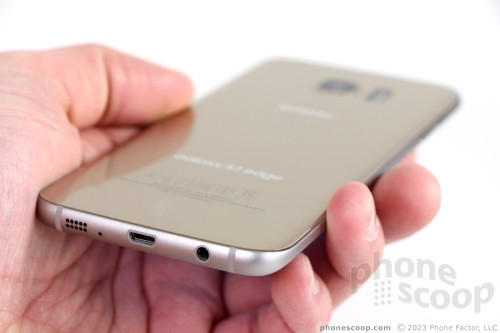
Did I mention that the S7 Edge is water resistant? It is. In fact, it can sit in 1.5 meters of water for 30 minutes and emerge unscathed. This is a big deal. So many people drop their phones in the toilet (gross), pool, or sink and ruin it. The S7 Edge is slim, attractive, waterproof and doesn't have any ugly hatches protecting the ports. Samsung's engineering team did a great job. This is another reason the S7 Edge is a bit thicker — the extra girth helps the interior accommodate the needed elements to prevent water from seeping in. I tested the S7 Edge in the shower, in the sink, and even dropped it in my morning cereal. The phone is as waterproof as the bulky rugged phones made by the likes of Kyocera, CAT, and Sonim. That's impressive.
The Galaxy S7 Edge is a state-of-the-art handset in every sense. I find it more appealing than the S7 from a design perspective, but some might prefer the latter's smaller footprint.
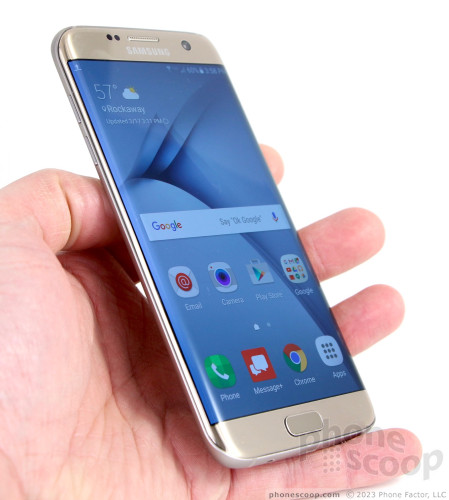
Screen
The S7 Edge's larger, curved display is one of the main features that separates it from the S7. The screen measures 5.5-inches across the diagonal and it boasts quad HD resolution. Samsung favors Super AMOLED displays, and the S7 Edge's is lovely. The screen carries the same number of pixels (3.67m) as the smaller S7, so that means the pixel density on the Edge's screen is slightly less. While this is technically true, it's splitting hairs. At 576ppi (S7) to 534ppi (S7 Edge), your eyes can't tell the difference. The S7 Edge is one of the sharpest displays available. I found it to be nice and bright, without the overly garish color representation that's typical of Samsung phones. That means it's more accurate. I didn't have any trouble using it outside under the sun.
The only complaint I have pertains the fancy curved edges. Because the screen is actually curved, the viewing angles of the side edges are impacted a bit. This means if you view a white screen head on, the sides appear a bit blue. Conversely, if you view the S7 Edge from an angle, the side edge is purer white, while the flat part of the screen turns a little blue. It's a minor issue.
You probably don't need a quad-HD display in your phone for normal use, but it makes a big difference for VR.
Signal
The S7 Edge runs on Verizon's LTE network and behaved exactly like the S7. Tested around the NYC metro area, it performed on par with other Verizon devices but it didn't bowl me over. Calls connected on the first dial without fail and the phone didn't drop any calls, even in a moving car. Under weak conditions the S7 Edge did miss a few calls that went straight to voicemail, but I was able to connect calls in all coverage conditions, weak and strong. On the data side of the equation, the S7 Edge was quick to download apps, load web pages, and scroll through image-heavy apps such as Facebook and Instagram. I've seen faster peak download speeds from other devices, but I can't rule out that I ran into network/location issues, rather than a problem with the S7 Edge. My guess is most people will be pleased with the S7 Edge's performance.
Sound
Like the smaller S7, voice calls sound great via the Verizon S7 Edge. I was very pleased with the phone as far as its actual phone functions are concerned. Voices in the earpiece were plenty loud, enough so to overcome most typical spaces in which you might find yourself (home, office, car). Voices sounded clear to my ears. There was no distortion or breakup, even when the volume was set up all the way. I wish calls sounded a bit warmer, but volume and clarity are more important than timbre. Those I spoke to through the S7 Edge said I was loud and clear.
The speakerphone maintains a good volume level, and clarity drops just a little bit. I was able to hear calls via speakerphone in the car, outdoors, in my home, and so on. The speakerphone was a bit more prone to distortion than the earpiece, but not overly so.
Ringers and alerts reach klaxon levels and will jolt you from the deepest slumber. The vibrate alert is just barely good enough.
Battery
Another reason the S7 Edge is thicker than the S6 Edge is to accommodate the larger battery. Samsung increased the power source from 2,550 mAh to a whopping 3,600 mAh. The difference is incredible. Where the S6 Edge just barely eked out a full day of use — and often didn't — the S7 Edge reliably provides usable uptime between breakfast and bedtime. I was not able to drain the battery fully, not once, despite repeated attempts over several days of testing. I was sure to stream YouTube videos, stream Pandora playlists, browse the web, page through Instagram, and spend plenty of time perusing Facebook. The S7 Edge managed to end each day with at least 25% left, if not more. That's good news. The S7 Edge outperformed the standard S7 (which has a smaller battery) by a noticeable margin.
The S7 Edge includes the typical set of Samsung power management tools. Samsung's Power Saver mode and Ultra Power Saver mode each offer distinct benefits. The former tones down the screens, notifications, and the processor to drum up a bit more life from the battery. The latter puts the phone into ultra basics mode with a greyscale screen and severely limits apps to push through hours of basic communications.
The S7 Edge supports Quick Charge and rapid wireless charging. When plugged into the included charger, I found the S7 Edge charged from 25% to 100% in 100 minutes (longer than the S7 by about 10 minutes). Wireless charging took a bit longer, too, at 3 hours, but that's still pretty good.
Bluetooth, GPS, NFC, WiFi
Samsung was sure to endow the S7 Edge with the usual set of radios for secondary communications. The S7 Edge supports Bluetooth 4.2 and the typical set of profiles for connecting to accessories, computers, and vehicles. The phone pairs easily with everything. Phone calls sent to mono headsets and my car's hands-free system were very good. I was impressed with the clarity of calls through a headset, in particular. Music pushed to my favorite Bluetooth speaker was also very good, but I've heard better.
The S7 Edge's NFC radio was instrumental in helping pair the device with several of these Bluetooth accessories. In other words, it works as intended. The NFC radio may also be used with Android Pay, which is preloaded on the phone, and Samsung Pay, which is available as a separate download from the Google Play Store.
I tested Samsung Pay with the S7 Edge and it worked, though it's not as easy nor as seamless as Apple Pay is on the iPhone. Despite Samsung's claims that Samsung Pay is available at most credit card terminals (NFC and magnetic stripe), I've found Samsung Pay only works at about 50% of terminals. I saw plenty of error messages and watched as a number of sales clerks grew impatient as I fumbled with Samsung Pay. Samsung Pay is definitely more widely available than Android Pay, which is limited to NFC, so guess I'd go with Samsung's mobile payment service over Google's for the time being.
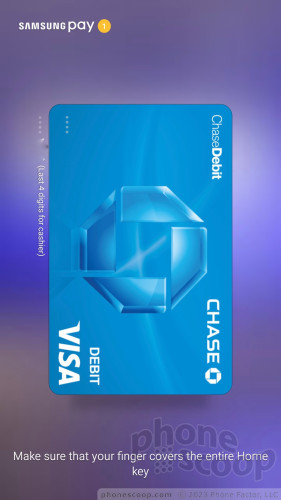
Google Maps pinpointed my location on the S7 Edge faster than it has with any other device. We're talking 2 or 3 seconds. Accuracy was down to 20 feet, which is about as good as it gets. Not only is the S7 Edge quick and accurate with respect to location, but it worked flawlessly with Google Maps to serve as a powerful navigation tool.
The WiFi radio was impressively quick.
Comments
Slight correction in review


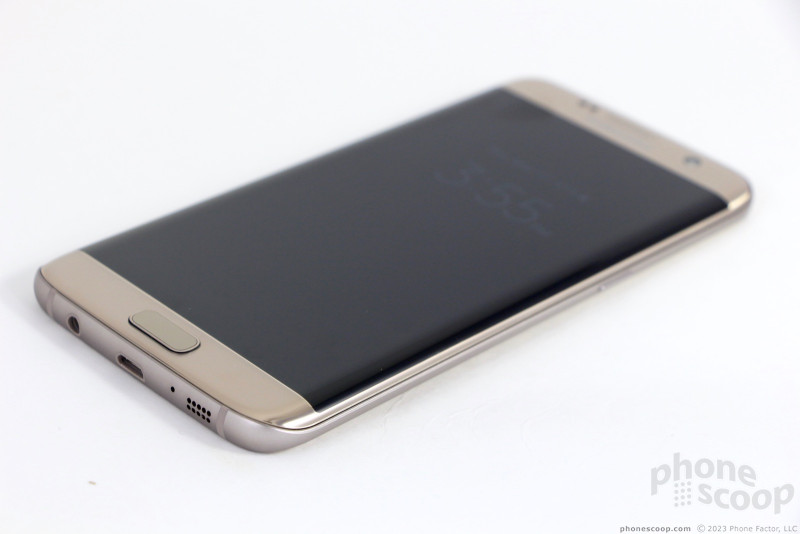















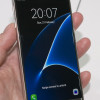 Hands On with the Samsung Galaxy S7 and S7 Edge
Hands On with the Samsung Galaxy S7 and S7 Edge
 Samsung Galaxy S7 Clears FCC with Single Approval
Samsung Galaxy S7 Clears FCC with Single Approval
 Facebook Trots Out Virtual Reality App for Samsung Gear VR
Facebook Trots Out Virtual Reality App for Samsung Gear VR
 Adobe's Lightroom App Adds RAW HDR Shooting for Android and iOS Phones
Adobe's Lightroom App Adds RAW HDR Shooting for Android and iOS Phones
 Sprint Flips On 3-Channel Carrier Aggregation for iPhones and Galaxies
Sprint Flips On 3-Channel Carrier Aggregation for iPhones and Galaxies
 Samsung Galaxy S7 edge
Samsung Galaxy S7 edge




